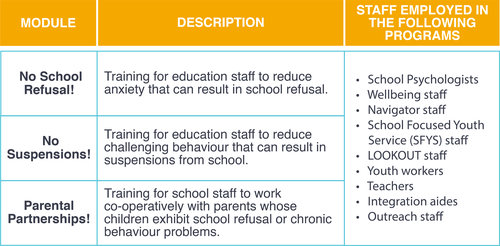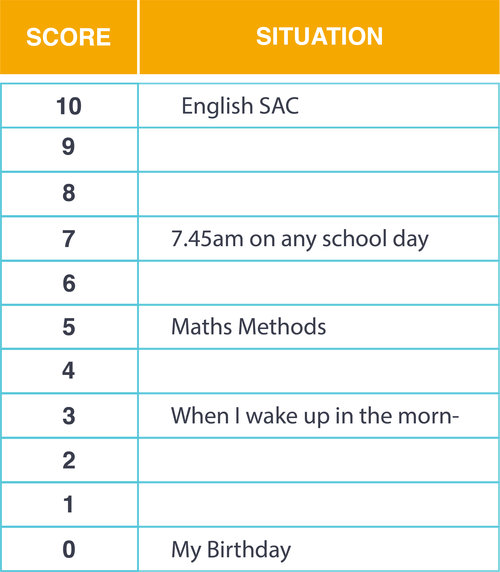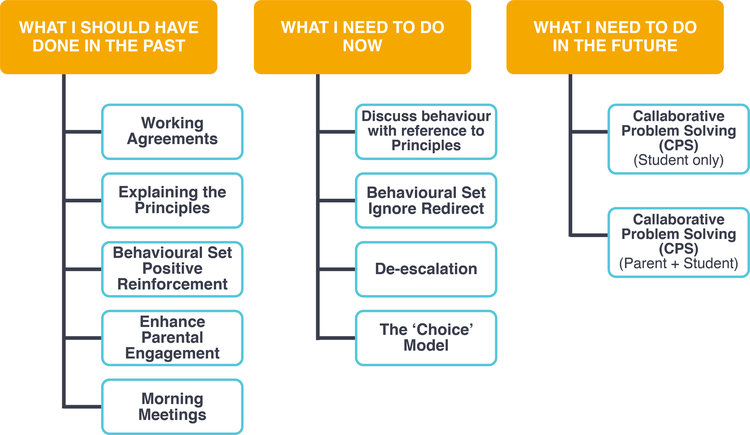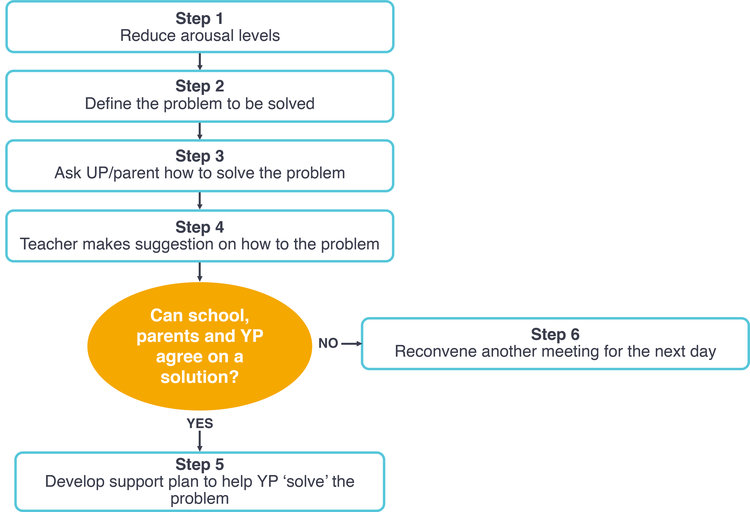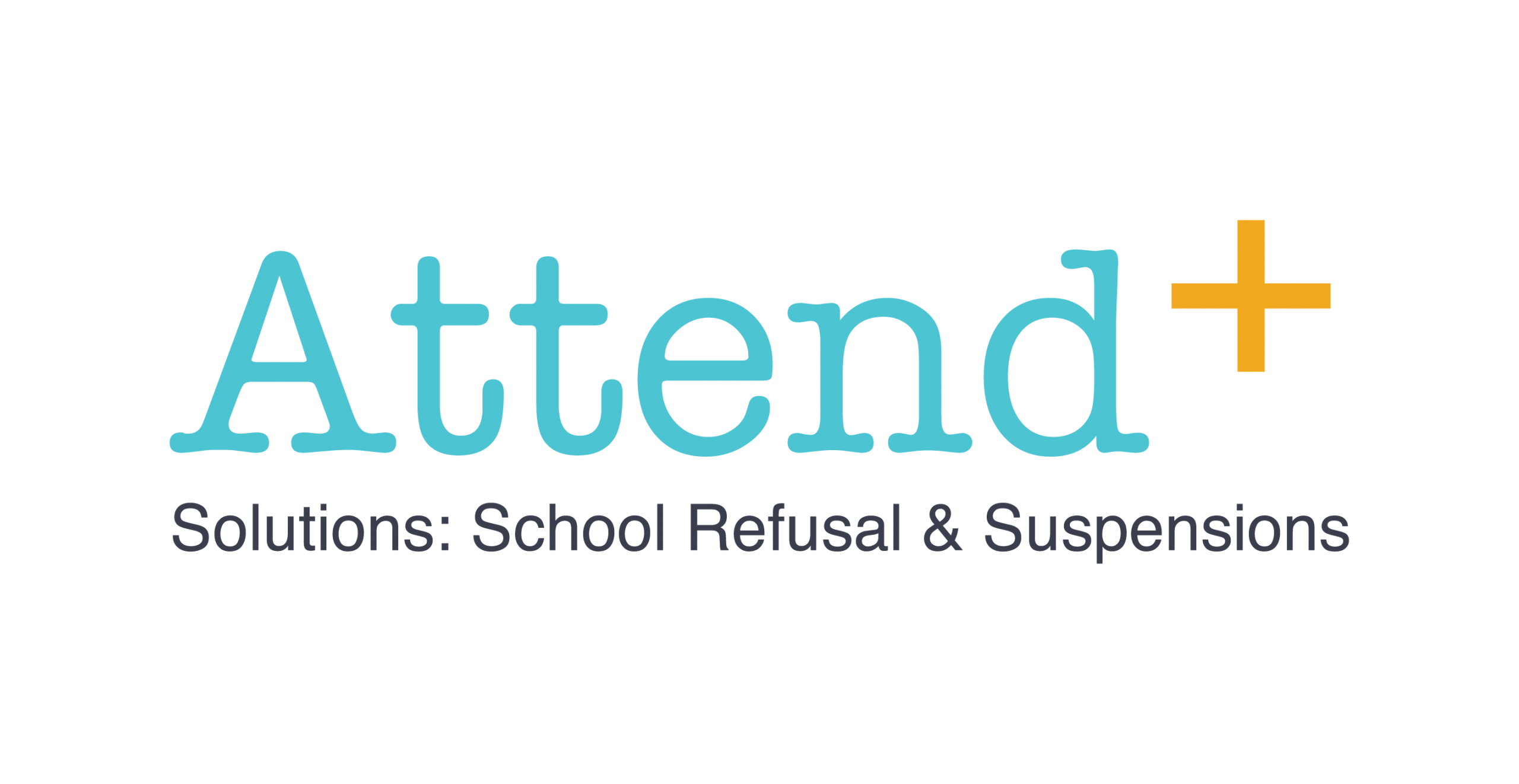
TRAINING FOR EDUCATION STAFF TO REDUCE SCHOOL REFUSAL AND SUSPENSIONS
Attend+ is a program to assist the most marginalised young people in Australia to increase school attendance. These young people are often enmeshed in the youth justice, child protection and mental health systems, and education is the only path allows them to move forward and establish a stable school life. However, if they refused to go to school or have been excluded from school, the capacity to move forward is limited. Attend+ aims to train education staff, using evidence based interventions, so that they can work with these young people to decrease school refusal and suspensions.
The program
Social Anxiety
The young person believes that other students are making negative judgements about them and to avoid such judgements they avoid going to school. This program is called No School Refusal!
Exclusion
The young person is excluded from school because of chronic behaviour problems. This program is called No Suspensions!
There are three training modules in Attend+. They are delivered in three-day or two-day options:
Choose from two day or three day training options
Three day program
Includes:
No School Refusal!
No Suspensions!
Parental Partnerships!
Two day program
Includes:
No School Refusal!
Parental Partnerships!
or
No Suspensions!
Parental Partnerships!
Parental Partnerships!
Partnerships with parents play and important role in both the No School Refusal! and No Suspensions! programs but for different reasons. In No School Refusal! parents must continually guard against suggesting to their child that they cannot possibly cope with any level of discomfort or anxiety or that it is possible to live life without anxiety. With the No Suspensions! program, parents are neither required nor expected to punish their children behaviour infractions. Rather, they are coached to reinforce (ie positive re-enforcement) their children when they make appropriate choices.
However, parents differ greatly in their ability to implement the parenting components of both the No Suspensions! and No School Refusal! programs. Attend+ tailors the coaching depending on the parent’s personal situation and abilities. We have identified six different types of parental situations/abilities.
- ‘Capable and supportive’ parent
- ‘Teacher hating’ parent
- ‘Overwhelmed’ parent
- ‘Superior’ parent
- ‘Angry’ parent
- Parent with drug or MH issues
Graeme Baird explains below:
No School Refusal!
School refusal is an increasing problem for schools and parents alike. School refusal is best understood in terms of anxiety, particularly social anxiety. Typically, students who refuse to go to school, grossly exaggerate the judgments that other students might make about them and grossly underestimate their capacity to tolerate such judgements in the unlikely event that they occur. The irony is that first line, evidence-based interventions for this type of anxiety is well known and straightforward. It is called the exposure or desensitisation approach and is typically delivered by psychologists.
Whilst the intervention is well known, students and their families can be reluctant to visit a psychologist. As schools have excellent relationships with both students and their parents, it makes sense for school staff to deliver the intervention under the supervision of either a school-based psychologist or an Attend+ psychologist.
No School Refusal! is built around developing a ‘school distress scale’. Students are asked to identify the least anxiety provoking part of going to school – eg walking to the school gate. Then they are asked to make a prediction, using the distress scale, about the level of distress they will experience. Next, they actually walk to the school gate and are asked to record the actual level of distress using the same scale.
The No School Refusal! Program covers the following topics
- What is anxiety and how is it different from social anxiety
- Anxiety: is it learned behaviour or innate behaviour?
- Avoidance: why avoidance is so addictive
- Safety behaviours: what are they and when are they a problem
- Developing and implementing a ‘distress scale’ with students
- Providing feedback to students
- When to seek supervision from qualified mental health professional
- When to refer to a qualified mental health professional
Graeme Baird explains below:
No Suspensions!
No Suspensions! includes three components:
- Preventing behaviour problems form occurring
- Dealing with behaviour as they occur (ie in real time)
- Re-engaging the student into the school following a serious behavioural incident
The details of these components are illustrated in the diagram below:
No Suspensions! can be used either with individual students or on a whole school basis. No Suspensions! involves a slightly different strategy for primary school students vs high school students
NO SUSPENSIONS! FOR PRIMARY STUDENTS
No Suspensions! for primary students uses a more behavioural approach (ie Positive Behaviour Program). This involves helping the student identify when they are becoming dysregulated and then making a choice to behave in a different more socially appropriate manner. The school provides feedback to parents and the parents reinforce these choices at home.
NO SUSPENSIONS! FOR SECONDARY STUDENTS
No Suspensions! for secondary students utilises more of a motivational interviewing approach which is incorporated into a Collaborative Problem-Solving (CPS) approach.
Every time a student exhibits challenging behaviour they are making a choice, be it a sub-conscious choice, to behave in that particular way. The essence of No Suspensions! is for the student to be able to identify the reasons that lead them to exhibit that behaviour and to make a different choice next time. The CPS approach is used to identify different choices.
The No Suspensions! training program includes the following modules:
- Behavioural skills eg positive reinforcement and ignoring negative behaviour
- The Three Choices Model
- Collaborative Problem Solving
- De-escalation process
Graeme Baird Explains Below:
Collaborative Problem Solving
Collaborative Problem Solving (CPS) is the cornerstone to the No Suspensions! and Parental Partnerships! programs. CPS assumes that all behaviour, including challenging behaviour, has purpose or meaning. CPS looks at the reason for the behaviour as the ‘problem to be solved’ and is a structured approach to finding, typically less aggressive ways, to respond the situation.
For example, the student who brings a knife to school does so for a reason namely because they do not feel safe. Therefore, in terms of CPS the problem to be solved is how to be safe at school (without bringing a knife to school).
Contact Us
Got a question about Attend+? Fill in the form below and we’ll get back to you.

